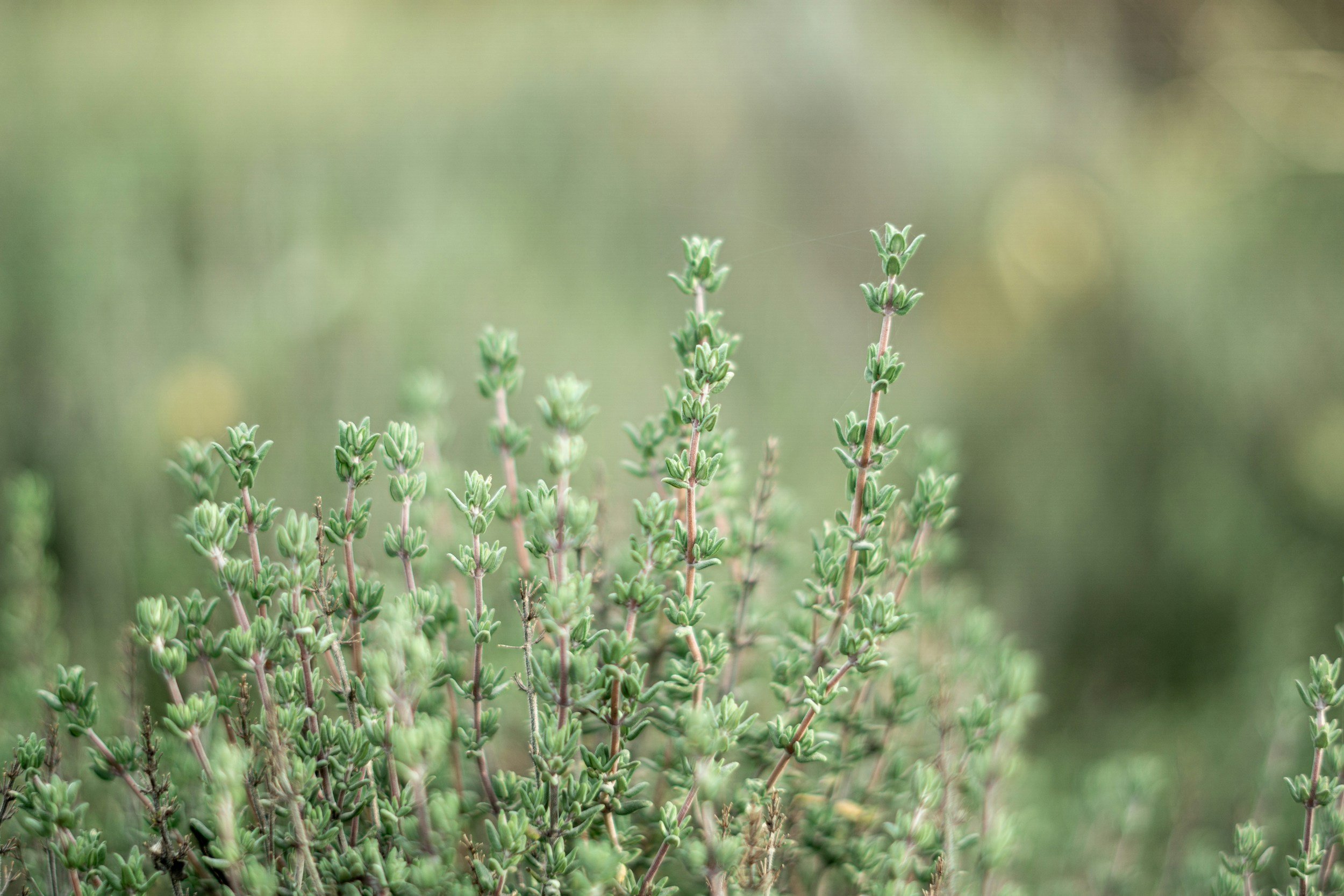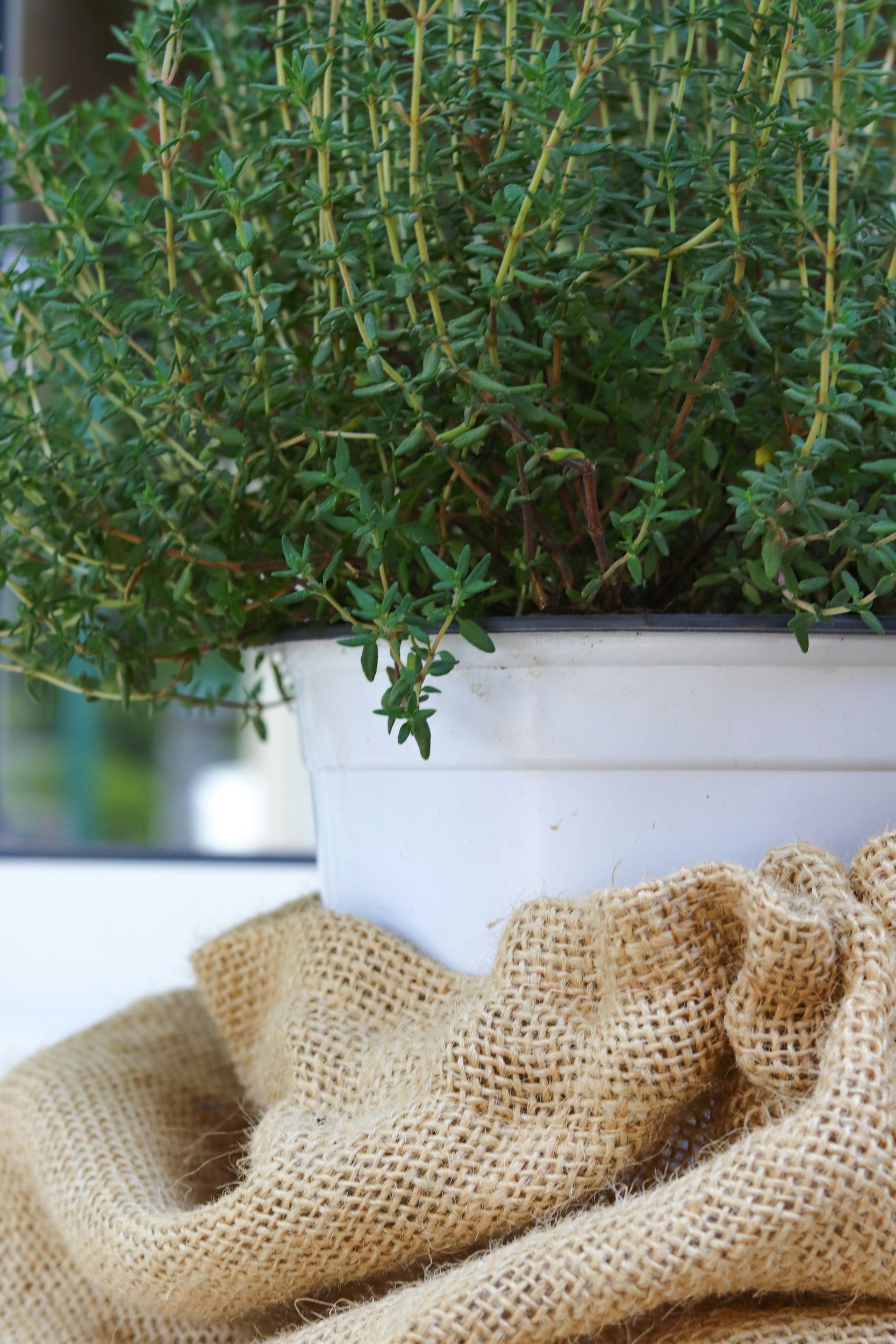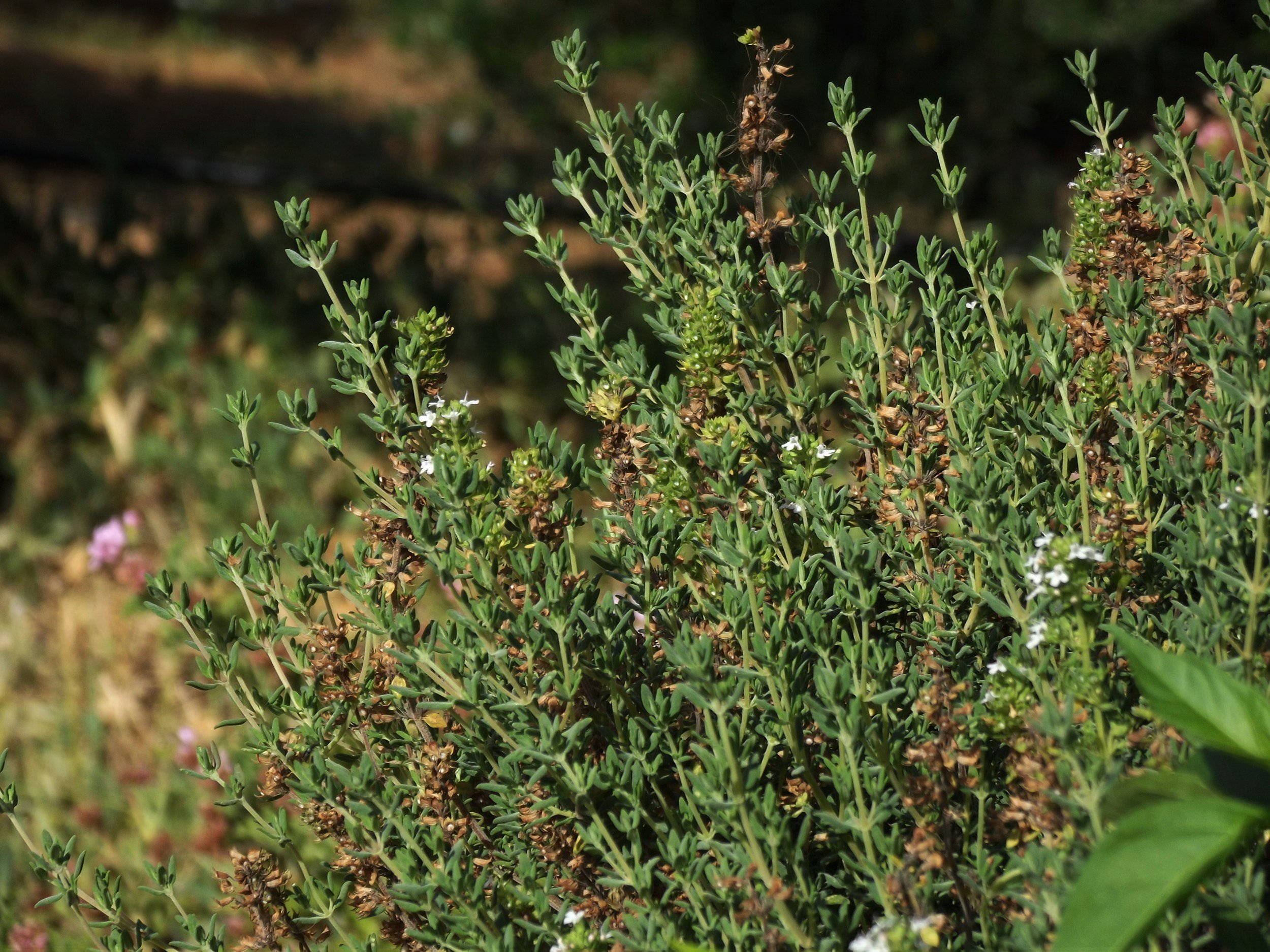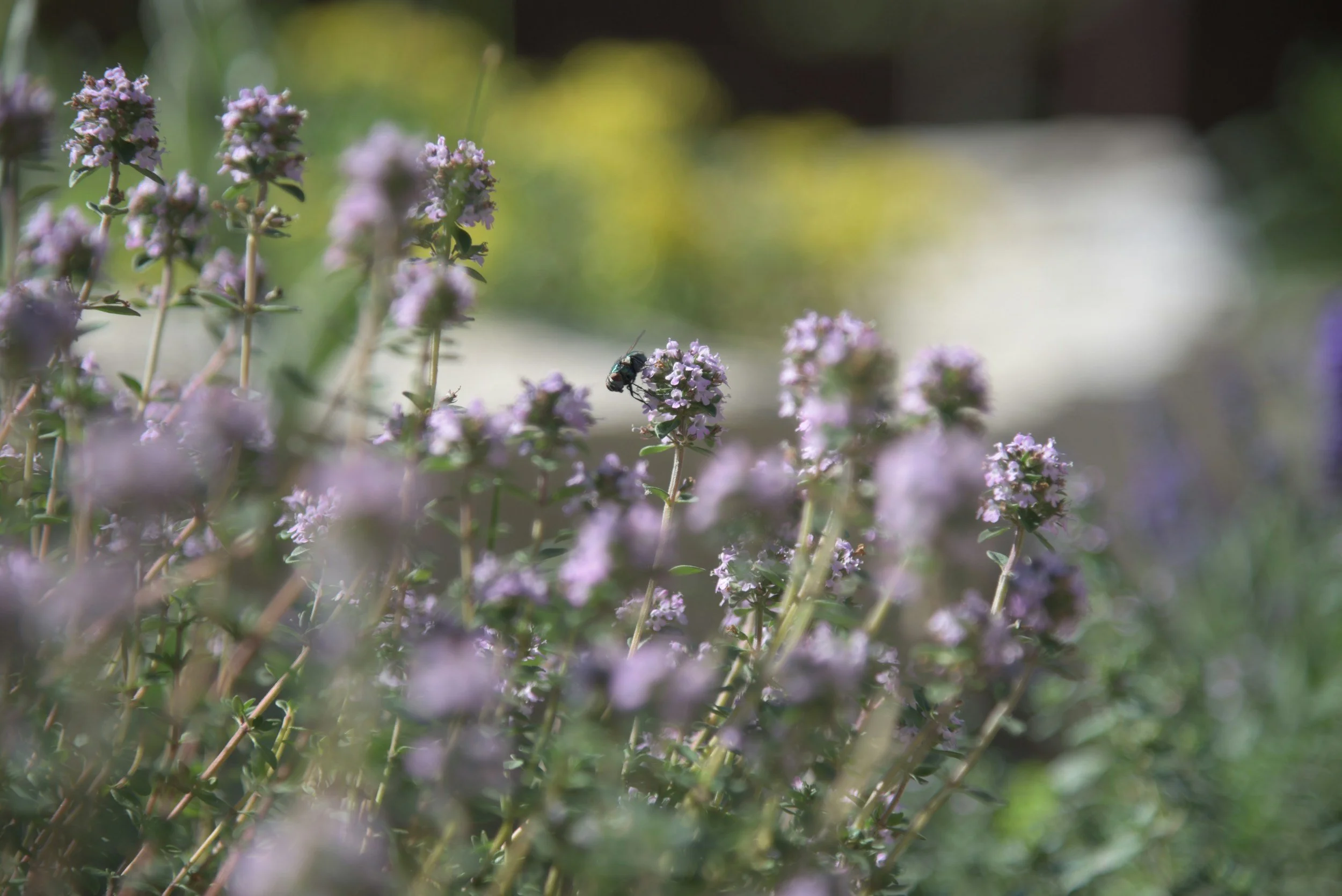
Thyme
Thyme
(Thymus vulgaris)
Plant Family
Lamiaceae
Other significant names
Garden or common thyme
Parts used
Herba (flowering stage)
Common forms of prescription
Syrup
Infusion
Tincture
Thyme (Thymus vulgaris) - Clinical Snapshot
Key Actions
Thyme is a powerful, versatile herb with a wide range of properties, including:
Antibacterial
Antifungal
Antiviral
Antimicrobial
Antispasmodic
Antiseptic
Anti-parasitic
Anti-catarrhal
Expectorant
Mucolytic
Antitussive (helps clear the lungs and ease coughing)
Digestive stimulant
Carminative
Astringent
Circulatory stimulant
Relaxant
Tonic
Diaphoretic (promotes sweating)
vulnerary (heals wounds)
Antioxidant
Immuno-stimulant
Anti-ageing support
Indications
Traditionally used for a broad spectrum of issues, thyme may support:
Digestive discomfort:
Indigestion,
Colic,
Flatulence,
Diarrhoea,
Dyspepsia,
Grumbling appendix
Respiratory health:
Coughs,
Chest infections,
Mucous congestion,
Fevers
Infections & inflammation:
Streptococcal infections,
Candida, UTIs,
Fungal infections (athlete’s foot, ringworm, fungal toenail)
Menstrual and hormonal issues:
Dysmenorrhea
Nervous system:
Tension,
Anxiety,
Poor memory
Circulatory and skin support:
Chilblains,
Water retention
Children’s health:
occasional use in bed-wetting (under guidance)
Hangovers and general detox support
⚠️Cautions / Safety⚠️
Avoid large amounts during pregnancy
Use with caution in young children
Thymus vulgaris
Phytochemistry and Pharmacology
-
Includes: Thymol, carvacrol, linalool, borneol
Action: Antimicrobial, expectorant, antispasmodic, antifungal
Use: These potent essential oils are the primary active compounds in thyme. Thymol and carvacrol are strongly antibacterial, antiviral, and fungicidal, making thyme highly effective in respiratory infections, bronchitis, tonsillitis, and intestinal dysbiosis. They also help loosen mucus and ease coughs, especially productive or spasmodic ones.
-
Includes: Apigenin, luteolin, naringenin
Action: Antioxidant, anti-inflammatory, antihistamine
Use: These compounds support immune balance, calm inflamed tissues, and reinforce thyme’s use in allergic conditions, lung inflammation, and gut irritation. They also offer gentle vascular and nervous system support.
-
Action: Astringent, antimicrobial, tissue-toning
Use: Tannins contribute to thyme’s astringent and protective actions on mucous membranes. They help reduce excess secretions, making thyme useful in diarrhoea, mouth ulcers, and wet coughs.
-
Includes: Rosmarinic acid, caffeic acid
Action: Antioxidant, anti-inflammatory, antimicrobial
Use: These support liver function, reduce inflammation, and enhance thyme’s broad-spectrum antimicrobial properties, especially in the gut and respiratory tract.
-
Action: Expectorant, emulsifying, mildly antimicrobial
Use: Saponins help break up and expel mucus, making thyme a key herb for congested lungs, wet coughs, and catarrh, particularly when there is infection or stagnation.
Traditional use
The name Thyme comes from the Greek "thymon", meaning "to fumigate", reflecting its ancient use in cleansing and purification. Burned in temples, used to sterilise wounds, and packed into bandages, thyme was valued for its antiseptic and aromatic properties. Roman soldiers bathed in it for courage, while medieval healers used it to ward off infection and plague.
Clinical discussion
Thyme is a potent antimicrobial herb rich in thymol and carvacrol, volatile oils with strong antibacterial, antifungal, and antiviral effects. Studies show it is highly effective against Candida albicans and other pathogens. The essential oil, always used diluted, can be added to clay or cornflour to treat fungal skin infections like ringworm and athlete’s foot.
An infusion or diluted oil can be used topically for wound infections and oral thrush. Internally, thyme supports the lungs and digestion. It is a key herb in cough syrups, with expectorant, antispasmodic, and mucolytic properties. It helps ease wet, spasmodic coughs, supports asthmatic breathing, and relieves bloating or fermentative gut issues.
Cultivation/harvesting
Thyme is a hardy evergreen perennial that thrives in full sun, is well-drained, and has poor soil. It dislikes rich or damp conditions. Water sparingly once established.
Propagation: Easy from cuttings, division, or seed.
Harvest: On a dry, sunny day, in the early flowering stage, cut the top third of the stems. Dry the stems in bunches, and store the leaves in airtight jars.
Care: Trim regularly to prevent woodiness and promote fresh growth.
For pots, herb beds, and rockeries, thyme is medicinal and highly attractive to pollinators.
Key Botanical Features of Thyme (Thymus vulgaris)
Growth
Thymus vulgaris is a woody, evergreen subshrub native to the Mediterranean region.
It has a low-growing, spreading growth habit, forming dense mats or small mounds.
Typically reaches 15–30 cm (6–12 inches) in height, spreading wider horizontally.
Stems are thin, woody at the base, and become green and slightly hairy towards the tips.
Roots
Possesses a fibrous root system adapted for dry, well-drained soils.
Roots are shallow but extensive, helping it thrive in rocky and arid environments.
Can root at nodes when stems trail along the ground, aiding in spreading.
Leaves
Arrangement: Opposite (in pairs at each stem node).
Shape: Linear to narrowly ovate, often curled under at the edges (revolute).
Size: Small, typically 4–12 mm long.
Colour: Grey-green to deep green, depending on variety and growing conditions.
Surface: Leathery, often glandular-dotted with tiny oil glands that release a strong aromatic scent when crushed.
Flowers
Type: Bilabiate (two-lipped), characteristic of the Lamiaceae family.
Inflorescence: Terminal spikes or clusters at the ends of stems.
Colour: Pale pink to purple, occasionally white.
Size: Very small, each flower around 3–5 mm long.
Shape:
Upper lip: Short and straight, often notched.
Lower lip: Larger, three-lobed and spreading, serving as a landing pad for pollinators.
Calyx: Tubular and hairy, with prominent teeth that help protect developing seeds.
Fruit & Seeds
Type: Nutlets (typically four small seeds per flower).
Shape: Oval and smooth, light to dark brown in colour.
Dispersal: Primarily by gravity, occasionally aided by insects or water.
Calyx often persists around the base of the nutlets until full maturity.
Adaptations
Prefers sunny, dry environments such as rocky slopes and Mediterranean scrub.
Highly drought-tolerant and thrives in poor, alkaline soils.
Aromatic oils deter herbivores and reduce water loss through evaporation.
Attracts pollinators like bees and hoverflies with its rich scent and nectar.
Well-suited to container growth or herb gardens due to its compact form.
Sustainability/conservation
Widely cultivated and naturalised in temperate regions.
Not of conservation concern.
Wild harvesting is uncommon, as garden-grown and organic culinary thyme are readily available and sustainable sources.
To maintain potency for medicinal use, cultivars high in thymol (a key constituent) should be selected and harvested just before flowering.






Sources
Bartram, T. (1998). Bartram’s Encyclopedia of Herbal Medicine. Constable.
Fisher, C. (2009). Materia Medica of Western Herbs, (2018 edition). Finchley Road, London. Aeon Books.
Hedley, C & Shaw, N. (2020). A herbal book of making and taking. Finchley Road, London. Aeon Books.
Hoffmann, D. (2003). Medical Herbalism: The Science and Practice of Herbal Medicine. Healing Arts Press.
McIntyre, A. (2019). The complete herbal tutor, revised and expanded edition. Finchley Road, London. Aeon Books.
Plants of the World Online | Kew Science. (n.d.). Plants of the World Online. https://powo.science.kew.org/
Disclaimer: This page is for educational purposes only. Consult a qualified medical herbalist before using herbs, especially during pregnancy, when trying to conceive, while breastfeeding, for medical conditions, or with children.
Read the full disclaimer → Medical Disclaimer.





